The Department of Defense has released some vivid images of SEALs performing an exercise with a U.S. Navy nuclear-powered guided missile submarine (SSGN).
The exercise saw East Coast-based Navy SEALs participate in a special operations forces interoperability exercise aboard the Ohio class USS Florida (SSGN-728). This took place on February 26 in the Mediterranean Sea, although the DoD only released the images on March 17.
As you can see below, a CV-22 Osprey, assigned to the USAF’s 7th Special Operations Squadron, 352nd Special Operations Wing, approaches USS Florida. Navy SEALs then prepare to be winched down onto the submarine.
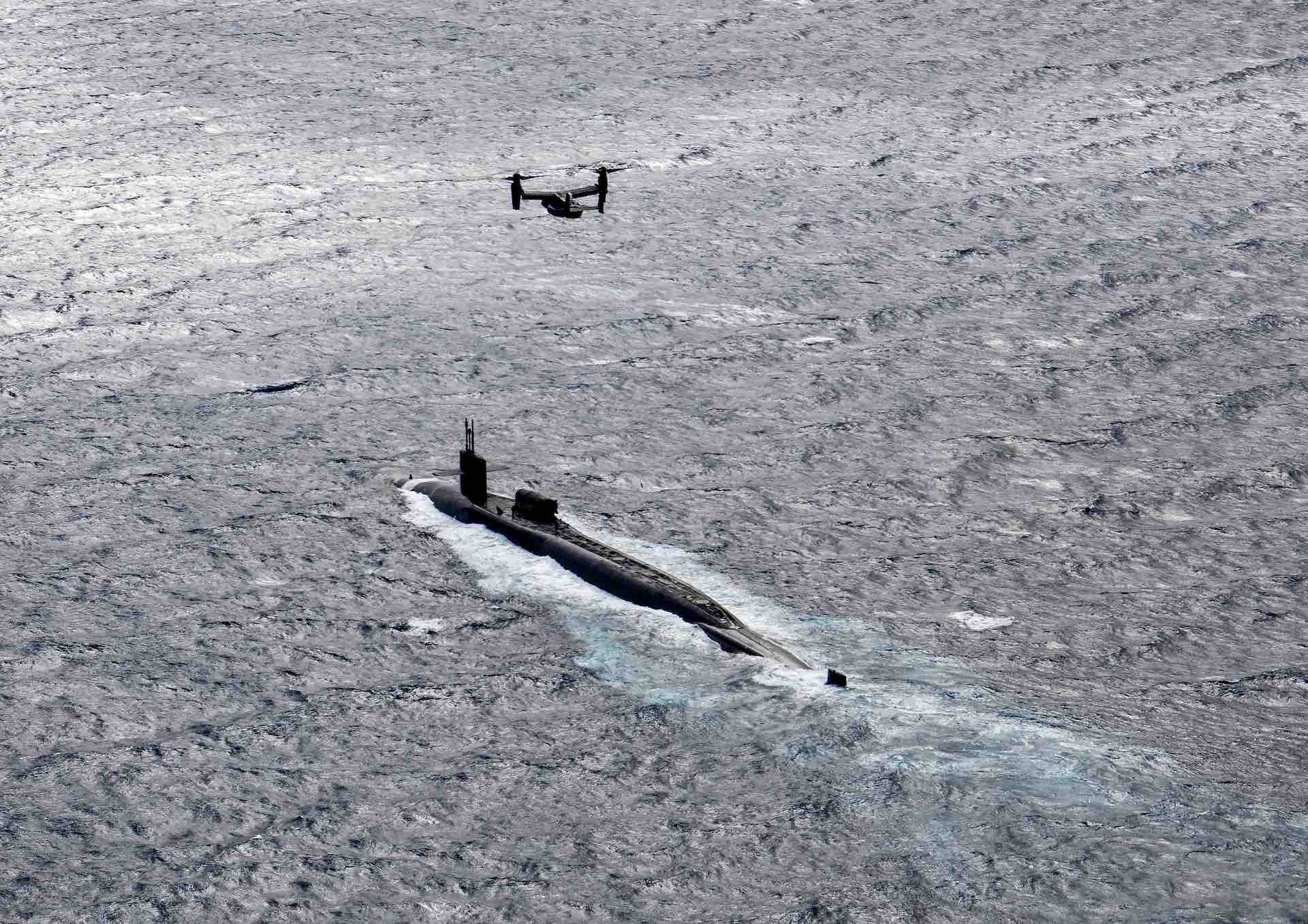
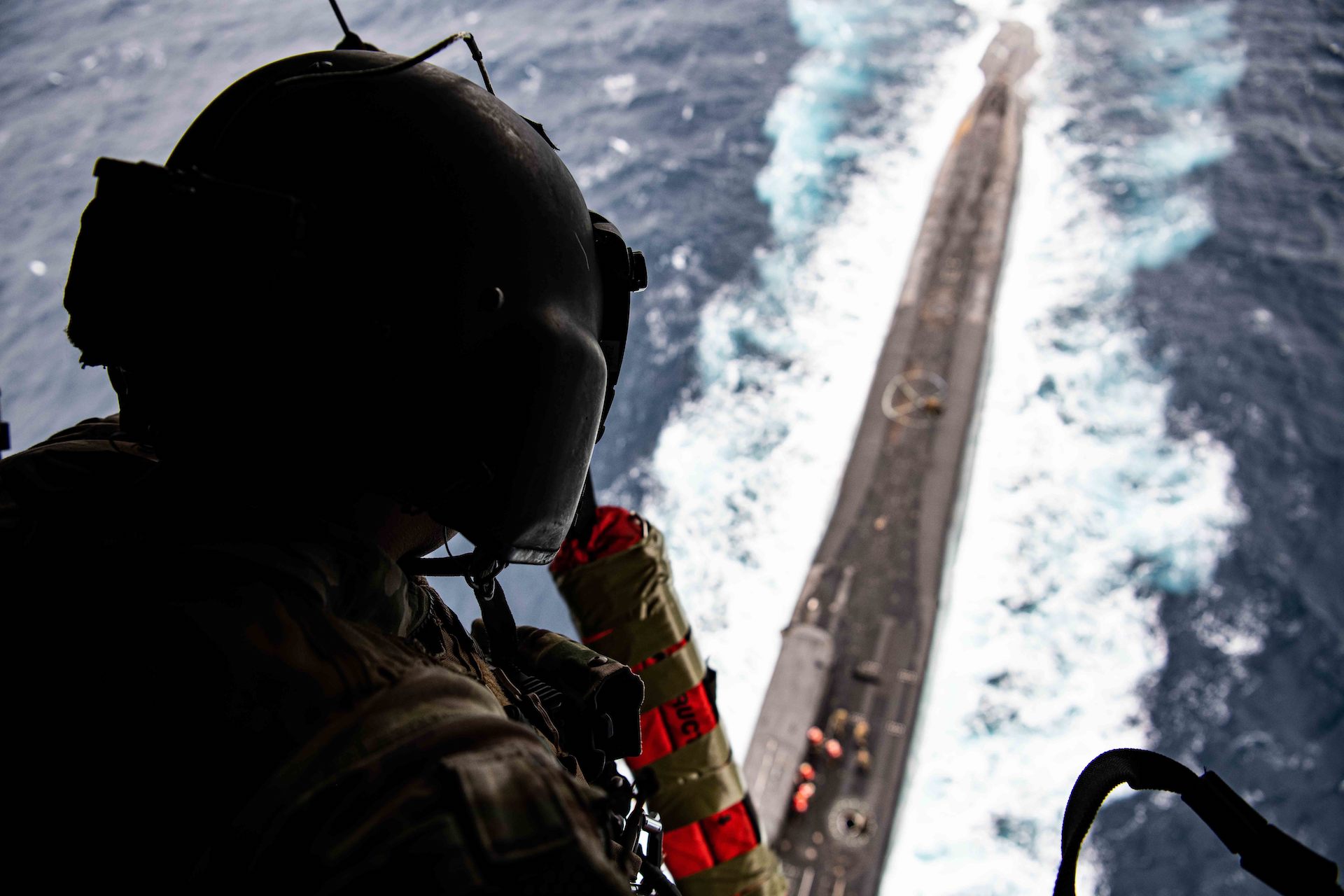
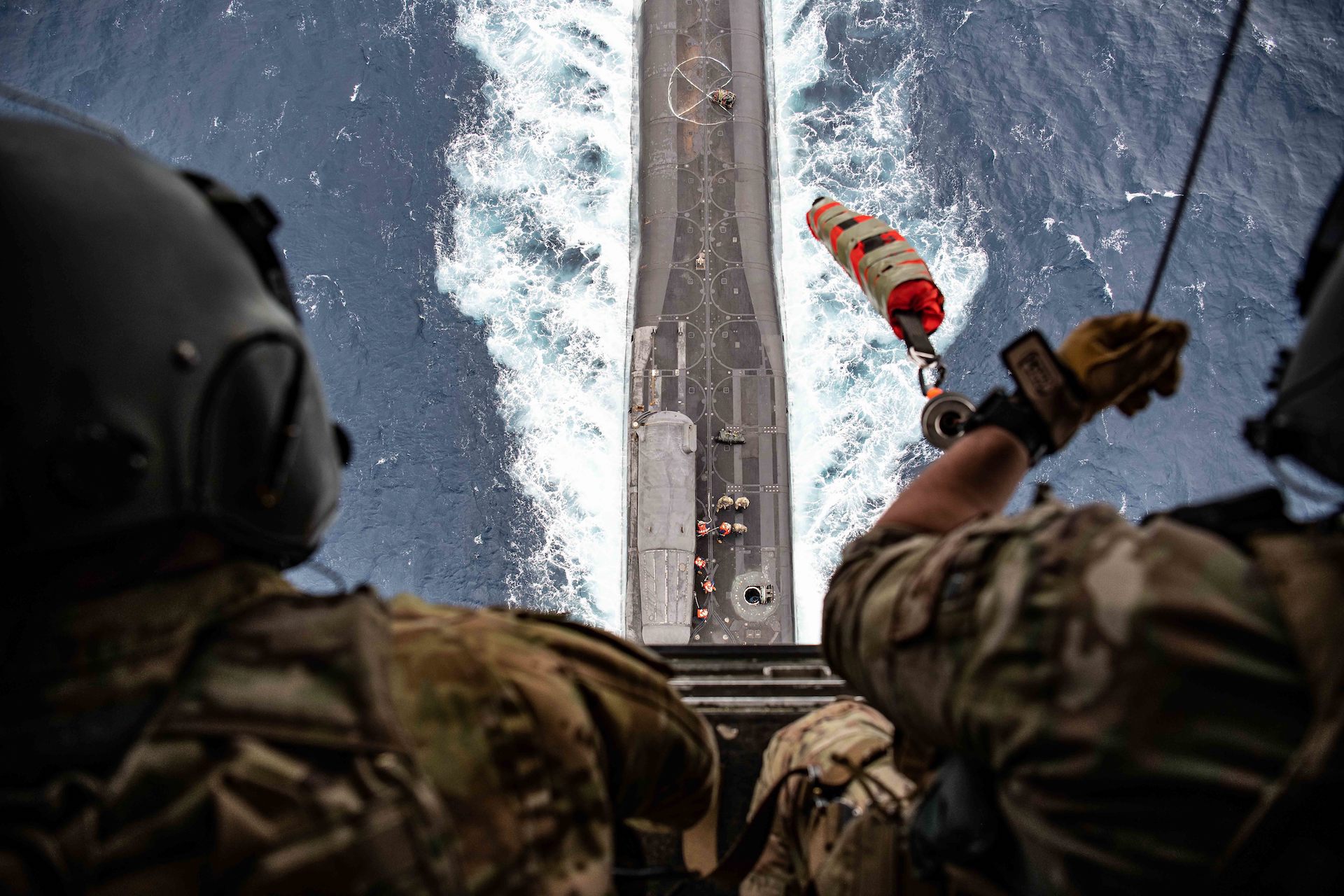
As many will quickly remember, the general maneuver was made famous in The Hunt For Red October. The good news is that the SEALs appear to have had an easier time boarding than Jack Ryan did.

Several of the images give clear views of the Navy SEALs as they are winched down to the sub below. They are kitted-out with their rifles and wear night-vision goggles. They also have smart phone-sized computer tablets attached to their chests which can also record video. Close-up images of the Navy SEALs’ faces have been blurred to obscure their identities.
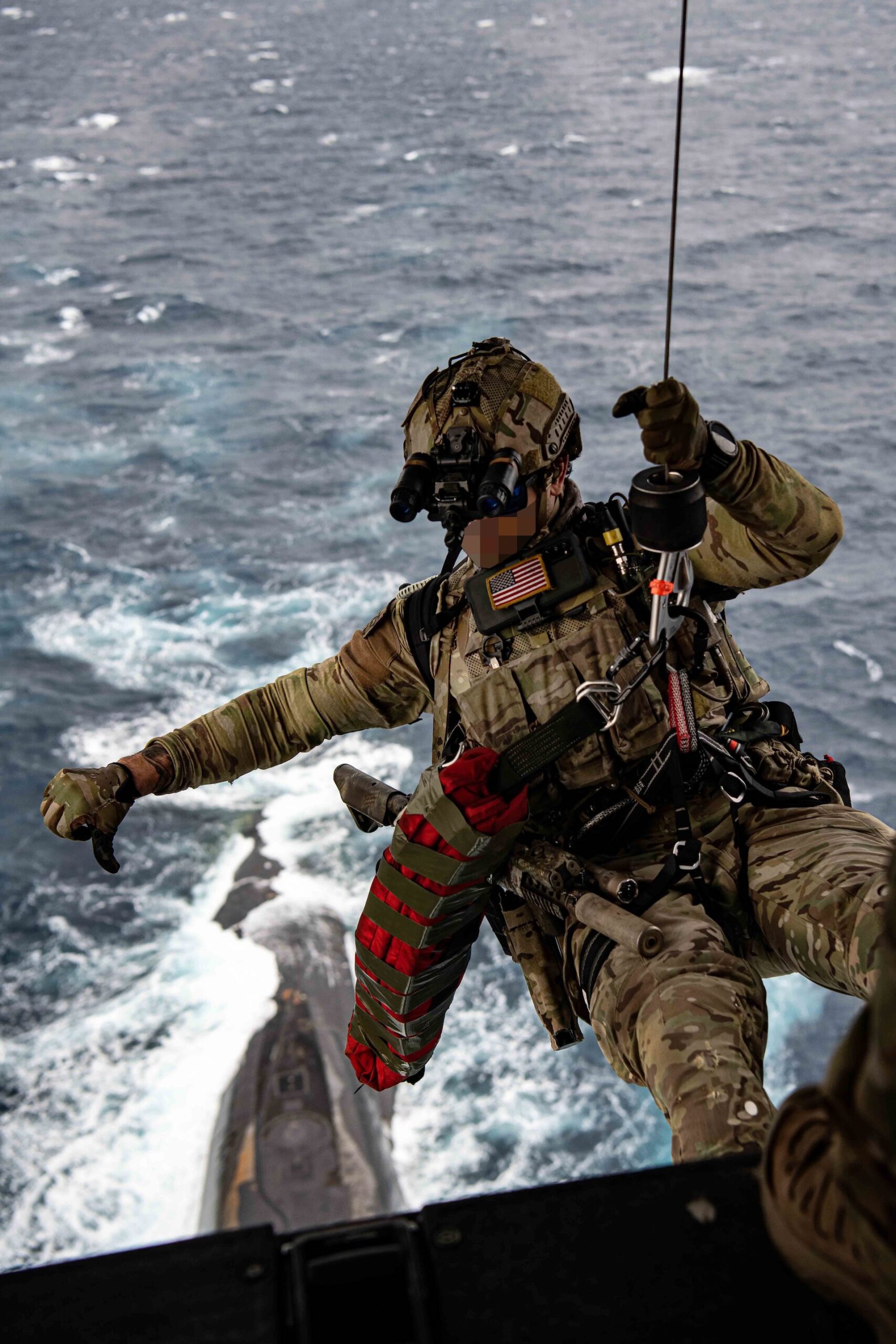
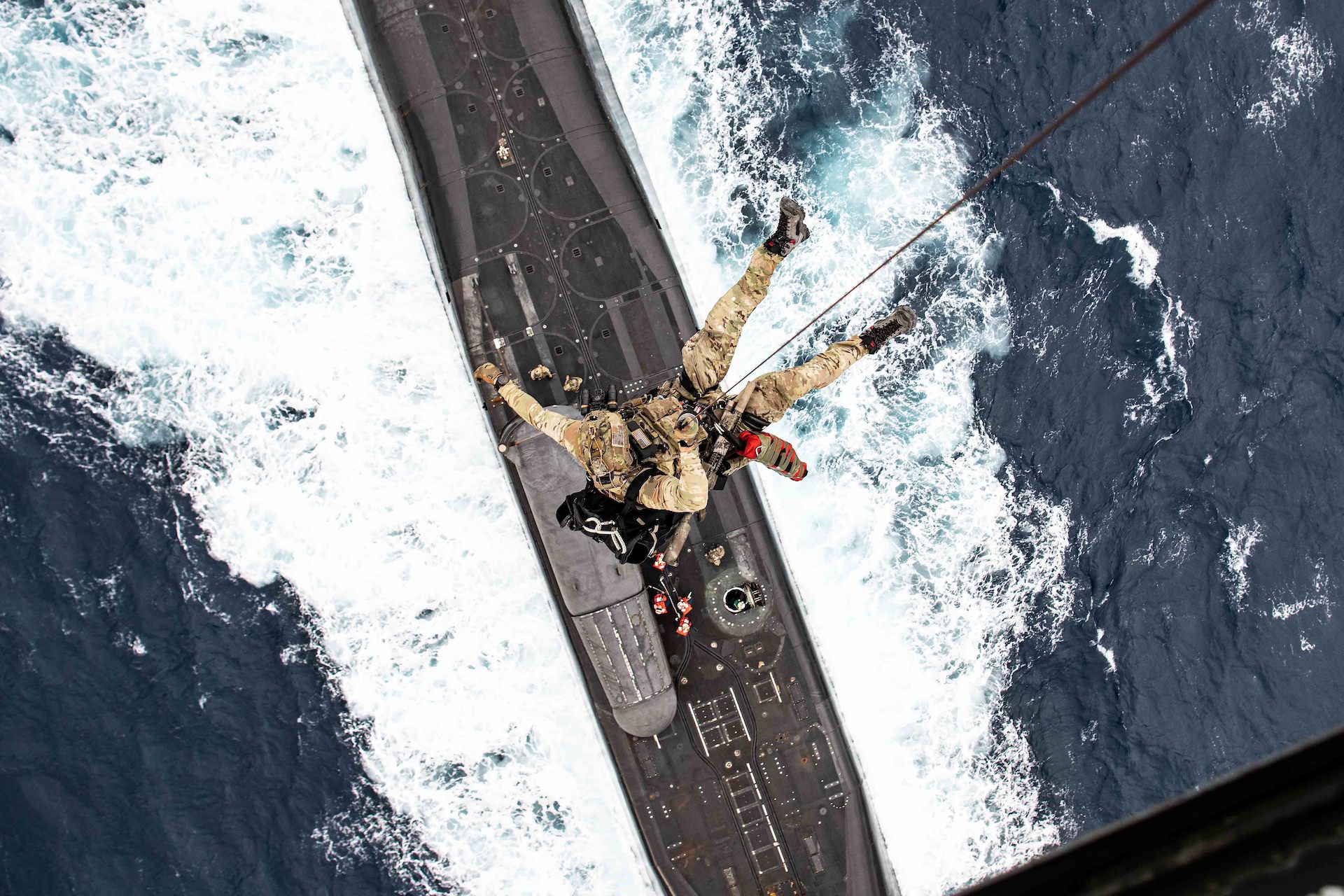
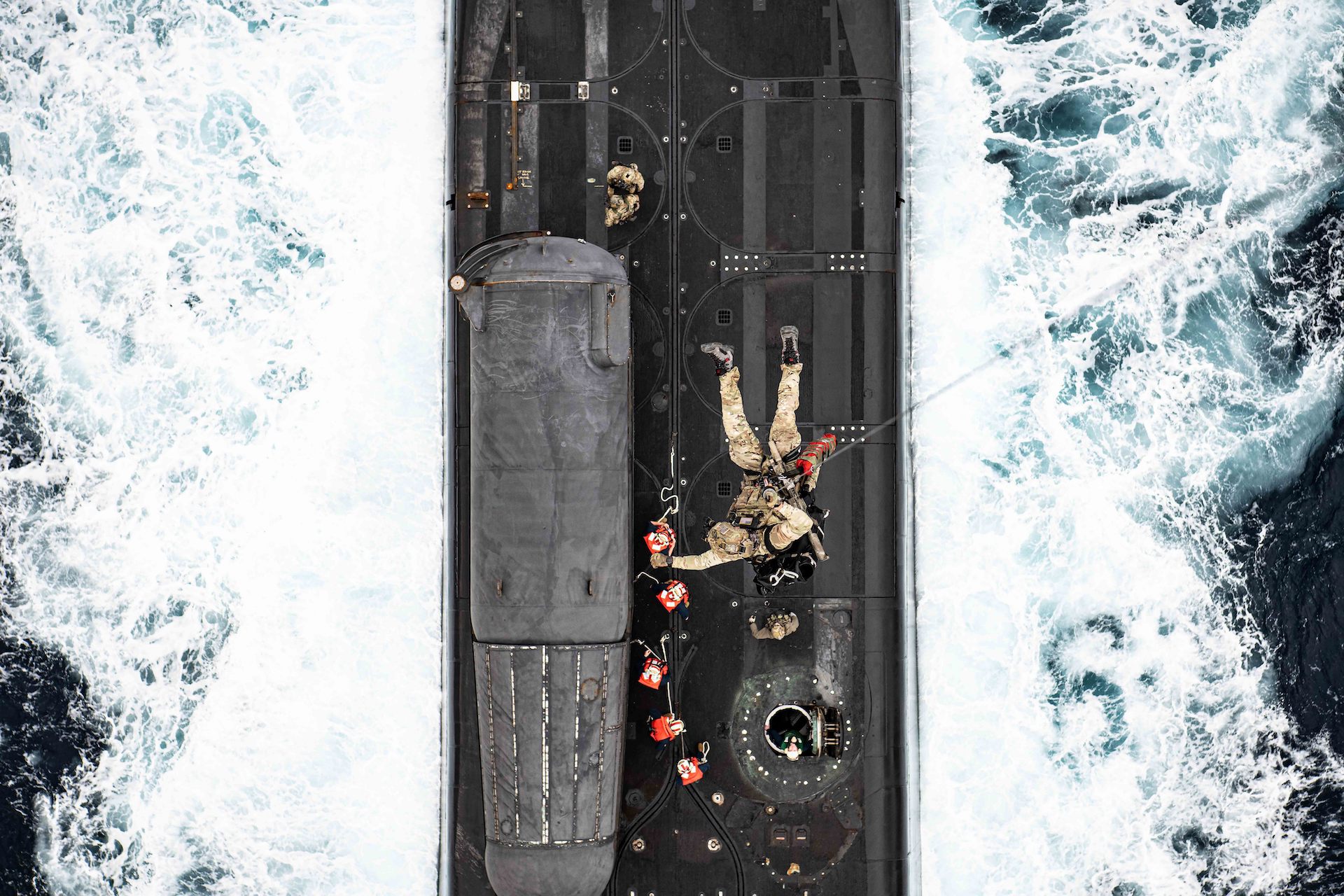
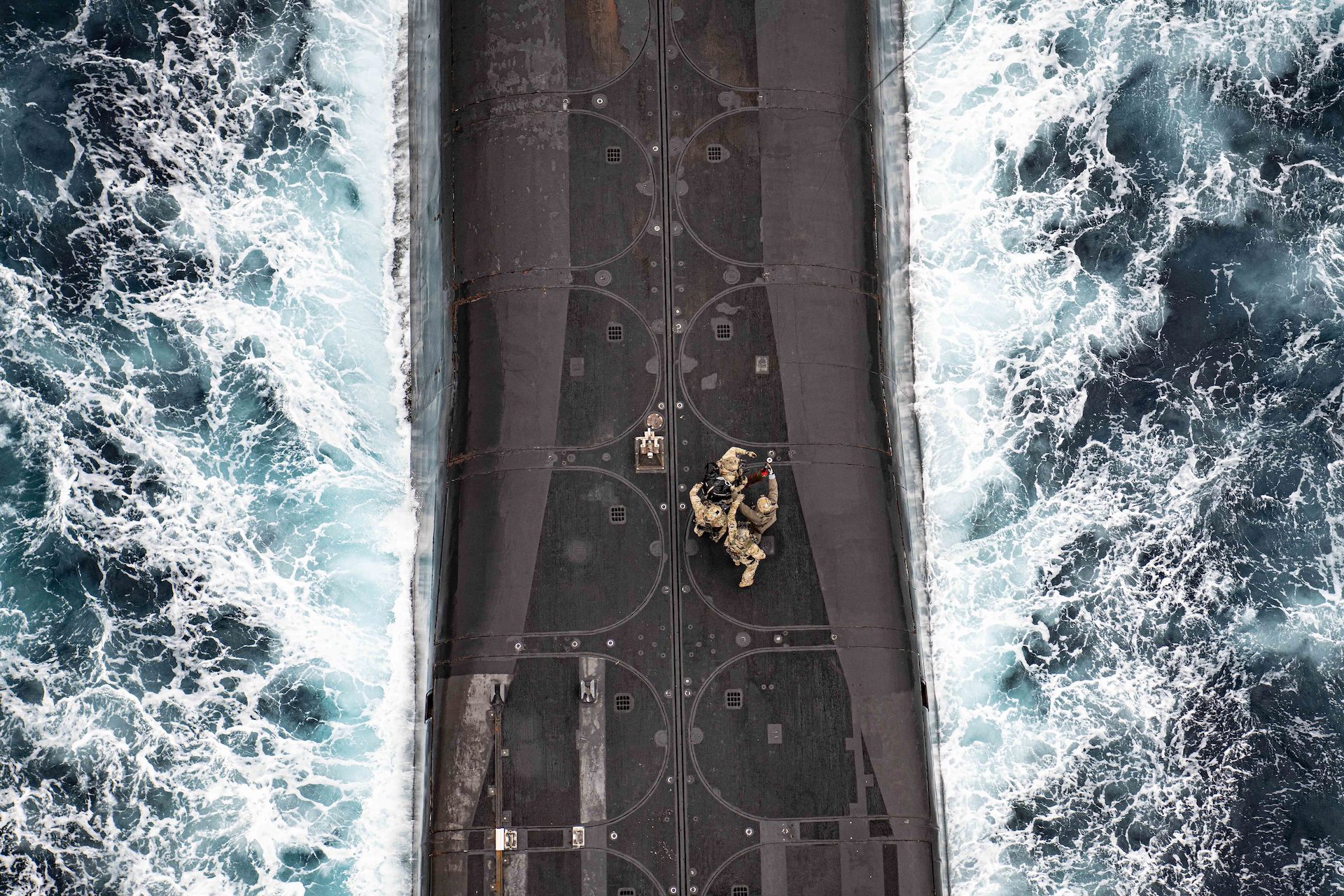
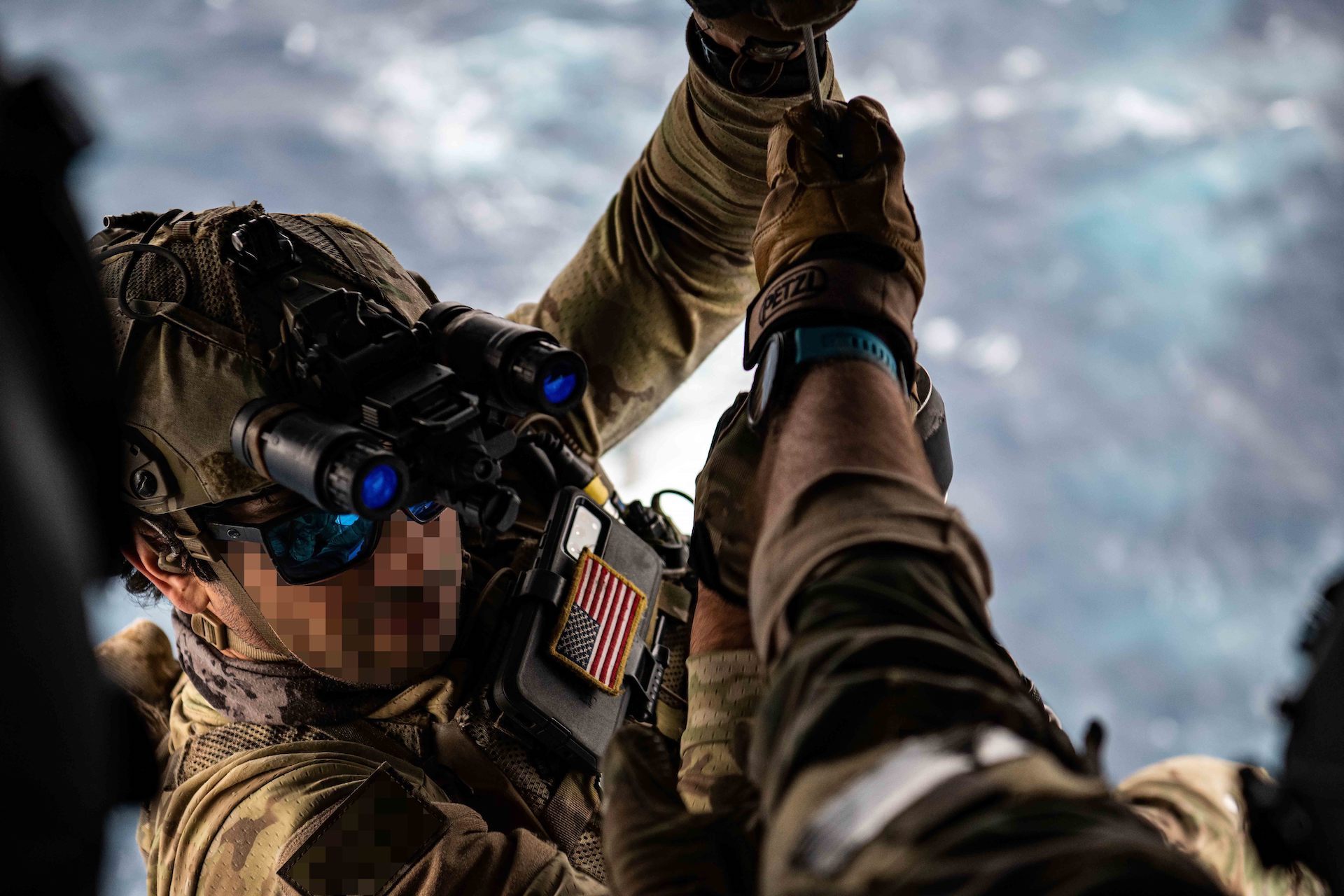
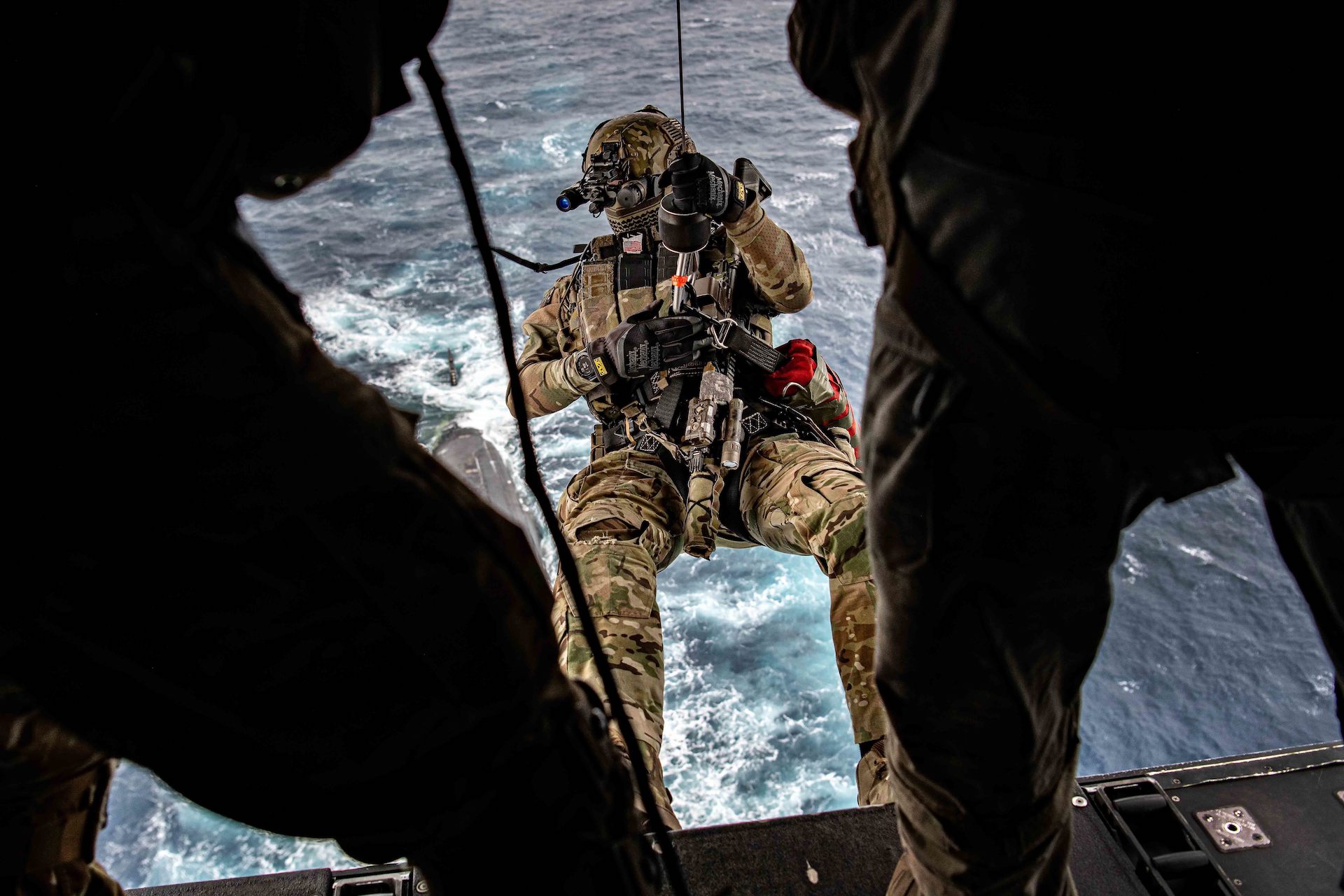
A large circled x appears to have been painted on the submarine’s upper hull, where it’s missile tubes are, as an improvized target for winching-down loads.
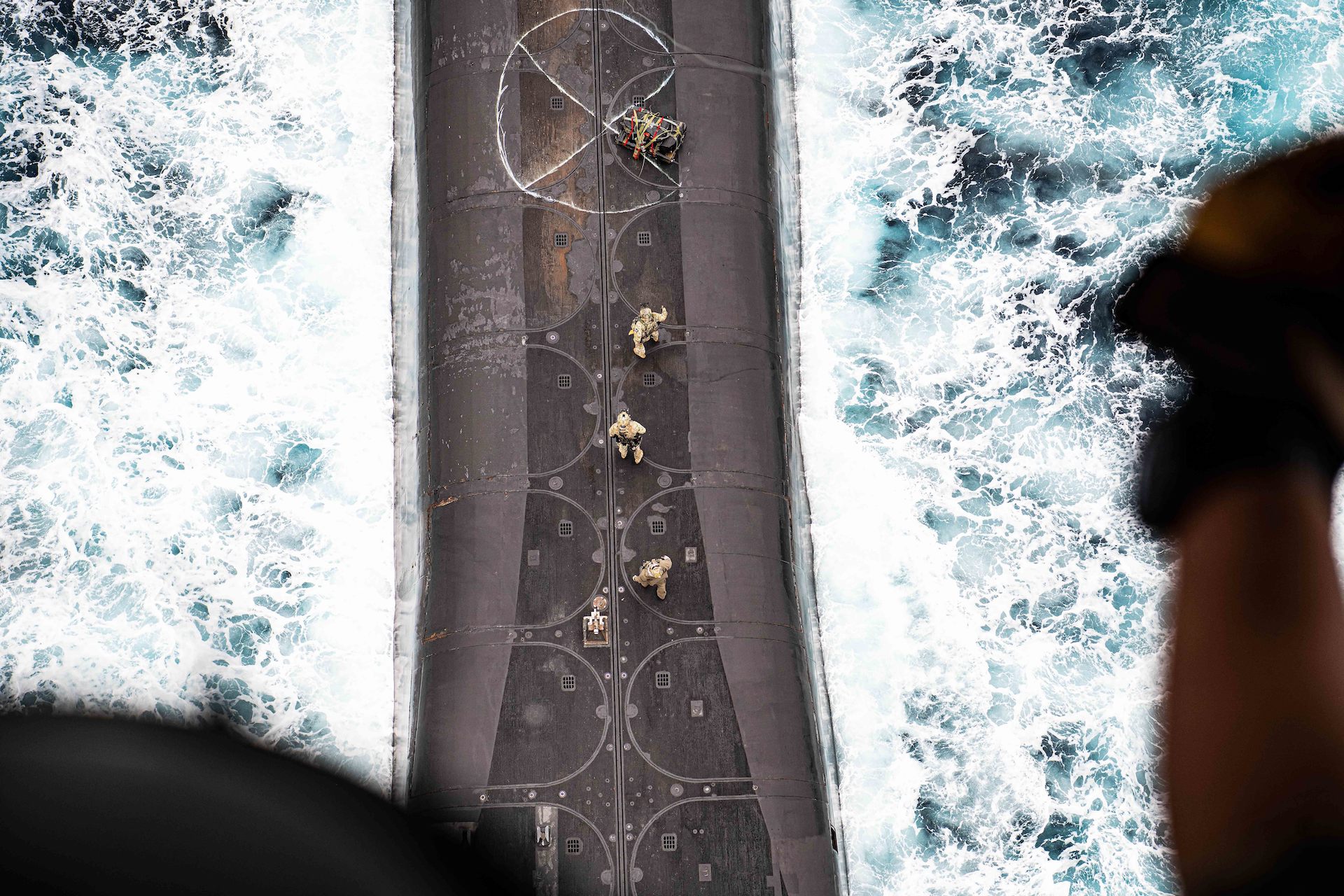
While the rappelling shots do appear to feature Navy SEALs, a second set of images released by the DoD shows Navy SEALs and Greek Special Operations Forces (SOF) landing a Combat Rubber Raiding Craft (CRRC) aboard the submarine.
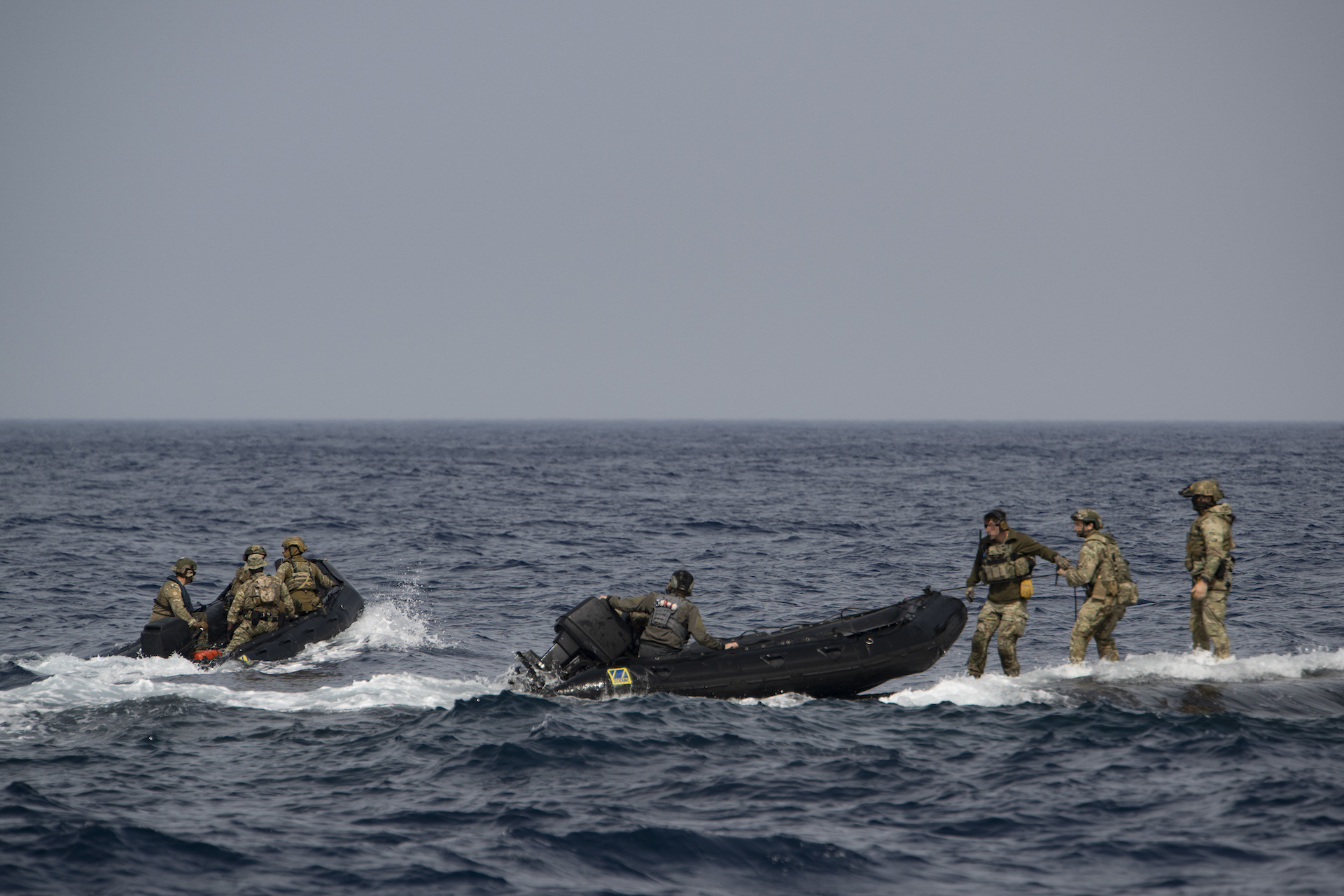
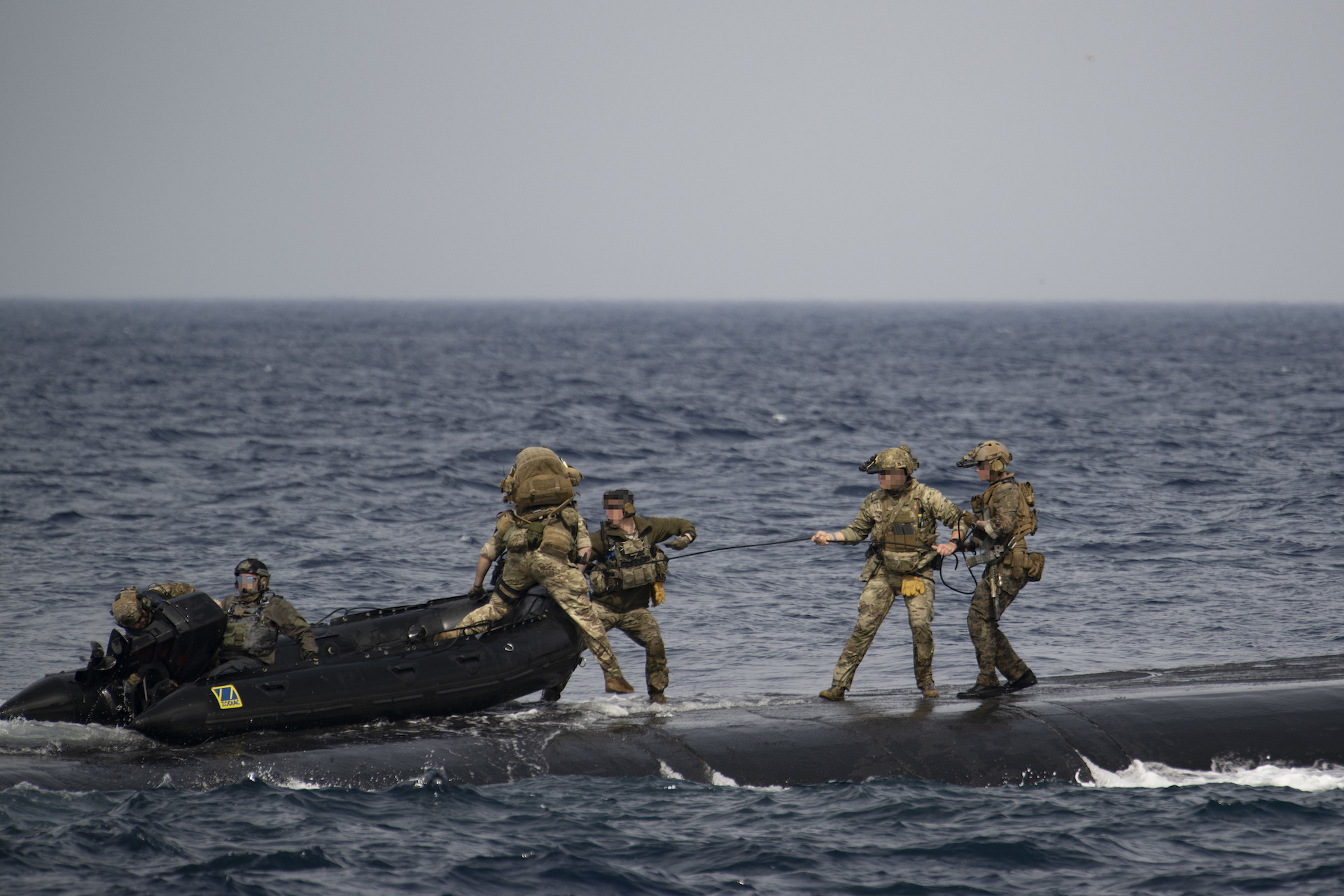
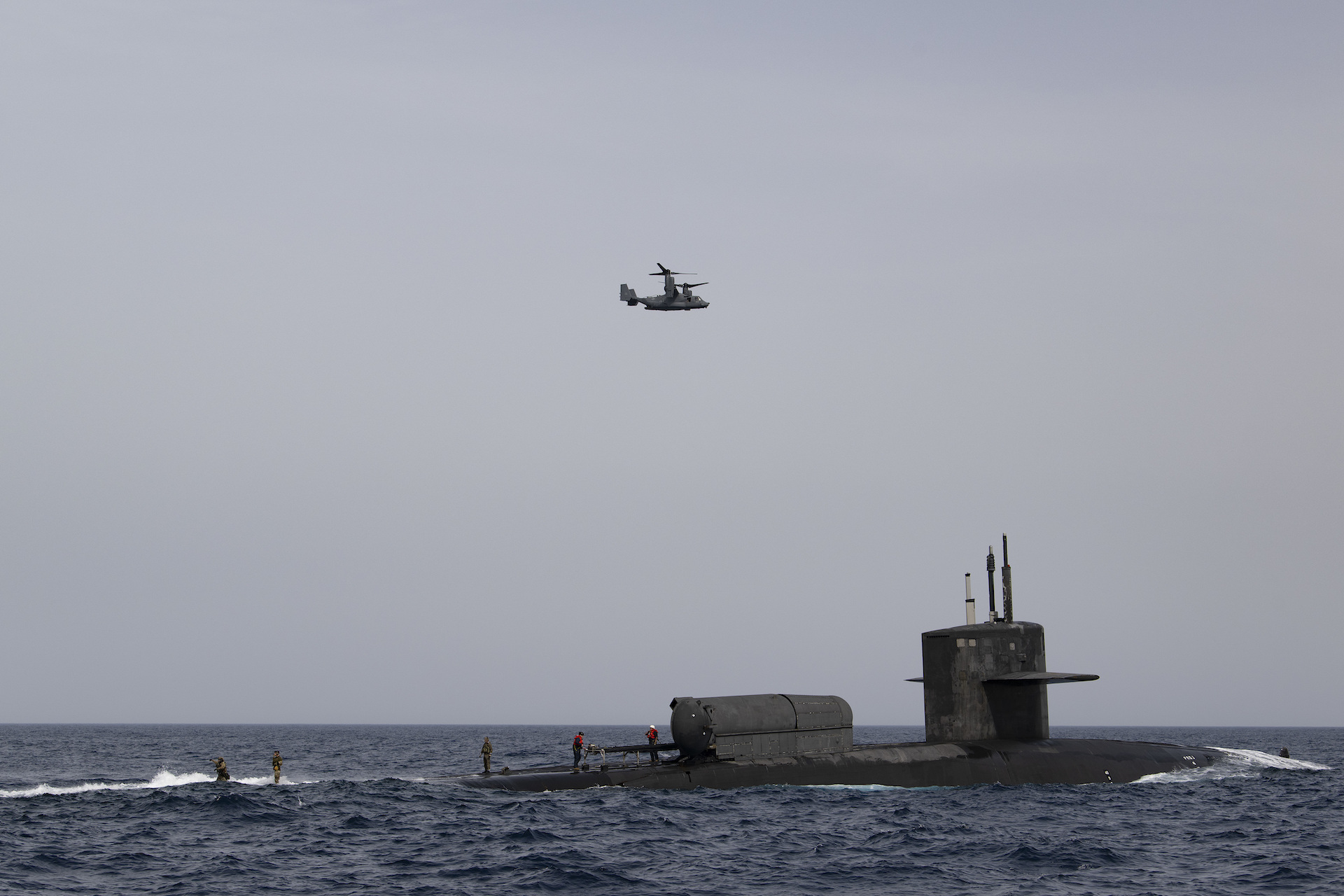
USS Florida was also accompanied by two patrol boats during the exercise. The official DoD image captions on the first set of images indicate that these are NATO special operations forces MK-V patrol boats. On inspection, they appear to be Greek MK-Vs.
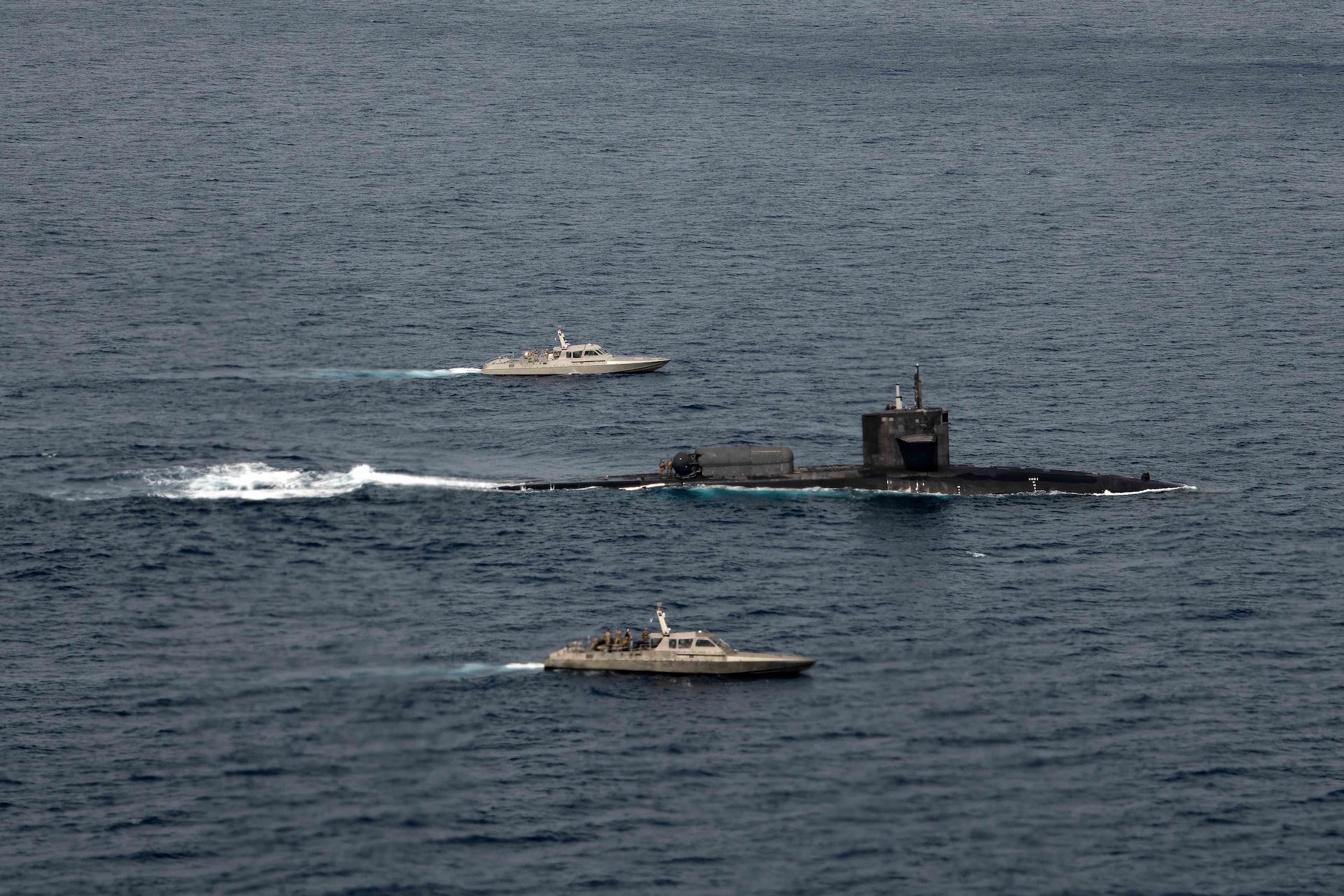
According to the official image captions on both sets of images, the exercise “demonstrate[s] U.S. European Command’s ability to rapidly deploy Special Operations Forces throughout the theater at a time and place of our choosing, and the U.S. commitment to train with Allies and partners to deploy and fight as multinational forces and SOF to meet today’s challenges.”
As we highlighted in this past War Zone piece, the Osprey is particularly well-equipped in accessing U.S. nuclear submarines, such as USS Florida. From our 2022 article:
The type’s range and speed allow it to go where helicopters cannot and do so faster, as needed. This could include executing medical evacuations, delivering small cargoes, or moving special operations personnel on or off a submarine. The latter is especially relevant for the Navy’s four SSGNs, which have a fundamental special operations mothership and command and control mission.

Along with the Navy’s three other Ohio class nuclear-powered guided-missile submarines, USS Florida is known for its ability to carry special operators into contested environments and work as command and control centers for those missions, as well as being able to sling up to 154 Tomahawk missiles. A more typical load for these submarines is around 100 Tomahawk missiles.
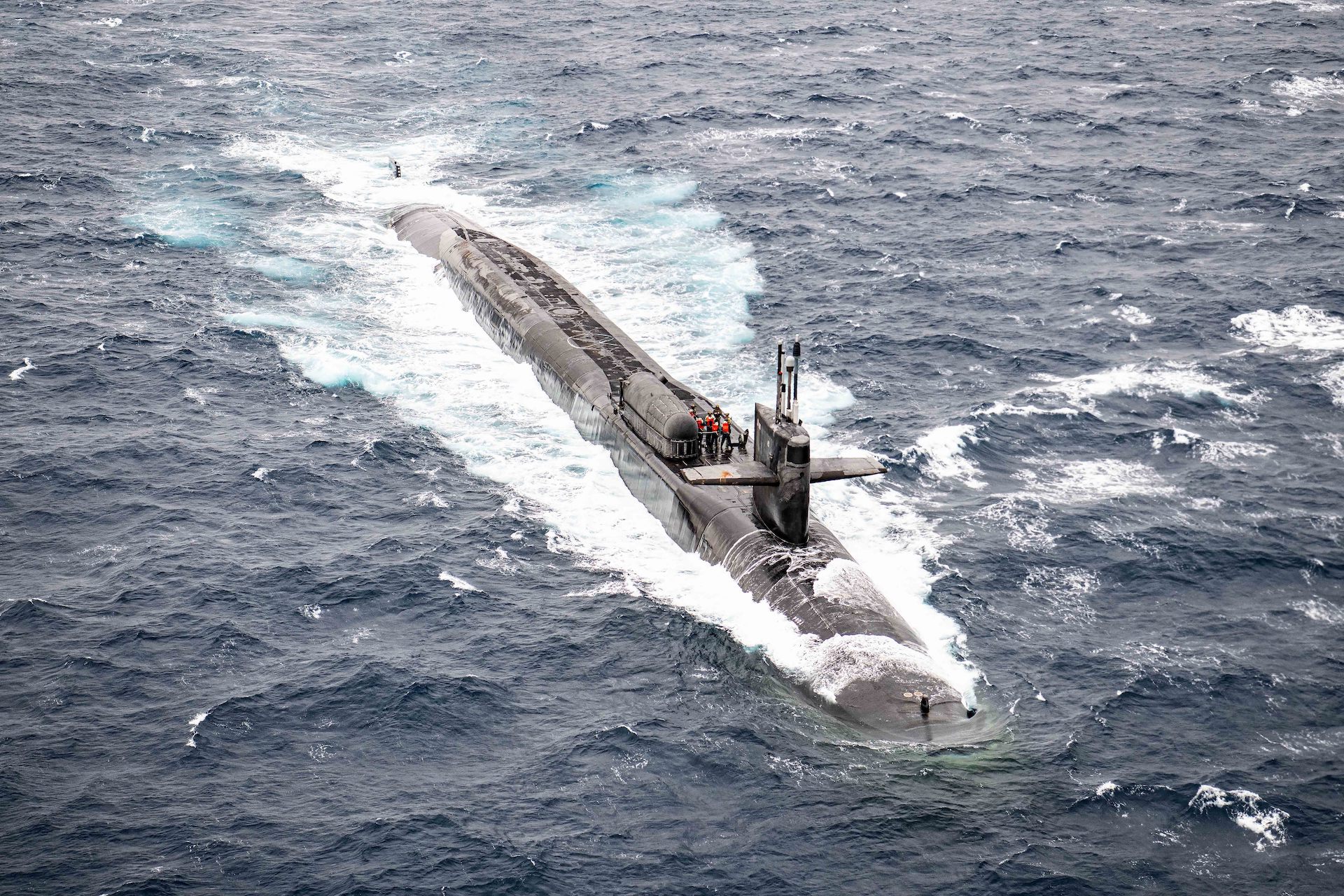
Originally a ballistic missile submarine (SSBN), the Navy began configuring USS Florida into a guided missile submarine (SSGN) in 2002 along with USS Georgia, USS Michigan and USS Ohio. Navy SEALs can depart USS Florida directly via two diver lockout chambers, or by using a swimmer delivery vehicle (SDV) via the installation of up to two dry dock shelters (DDS) that sit over the diver lockout chambers, as seen in the photo below from this new set of images.
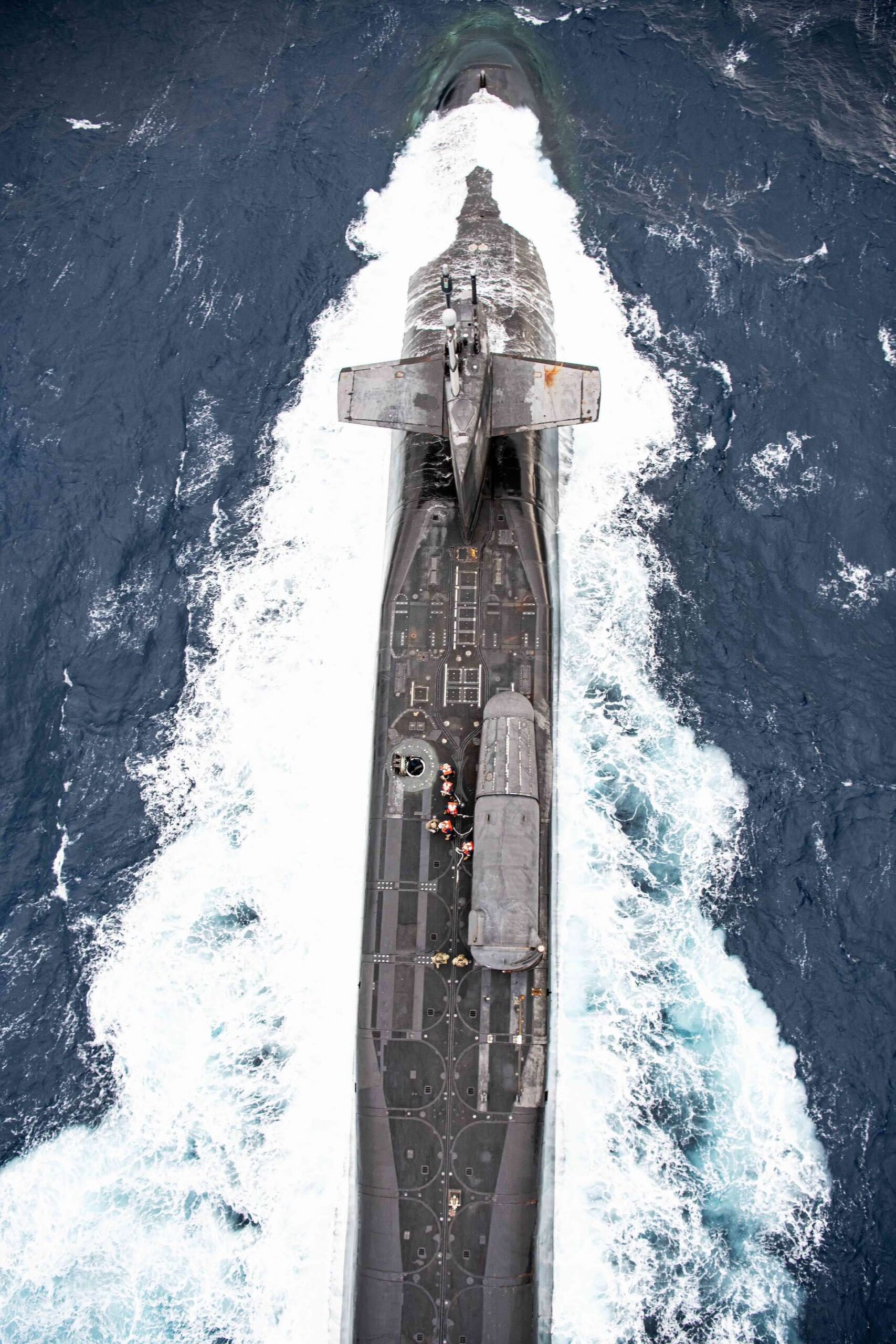
Once deployed, USS Florida can support Navy SEALs via intelligence from its sensors and drones, and from a vast array of other sources via its advanced communications systems. It can also provide overall command and control and coordination of complex amphibious special operations missions. You can read more about the history of the Navy’s Ohio class SSGN submarines in this past War Zone feature.
As of March 16, USS Florida was located in the Bay of Naples, southwest of Italy. According to U.S. Sixth Fleet, the submarine stopped there for “personnel and provisions,” as well as to demonstrate the continued strength of relations between the U.S. and fellow NATO member state Italy. As we’ve discussed in the past, it’s unusual for the Navy to reveal the locations of its SSGNs, but it does happen from time to time. This especially tends to occur at times of heightened international tension. The Navy has periodically let the presence of its SSGNs in the Mediterranean be known during the buildup to, and following, Russia’s all-out invasion of Ukraine.
All in all, the images really give you a sense of the scale of the big SSGNs, and are a reminder of their embarked highly potent special operations teams which can quickly be put into action right in the enemy’s own backyard.
Contact the author: oliver@thewarzone.com
